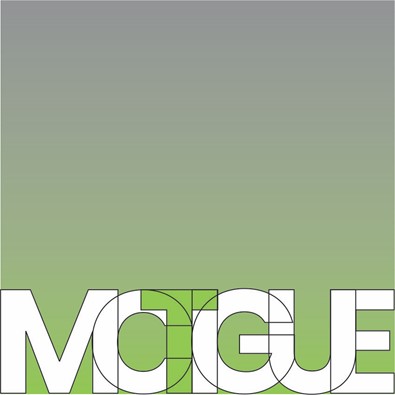A few weeks ago, I participated in an annual event in Palm Springs, California called Modernism Week. This event, an 11 day festival with conferences, tours, a show and sale, is one of the best anywhere in the world at presenting the architecture of the 1950’s to 1970’s and provides great opportunities to hear from some of the most talented architects, designers and creators in the world, while also enjoying tours of homes and buildings in the California desert. It’s a cool gathering in a normally hot part of the world!
One of the questions I asked myself, as I planned my trip there, was how relevant is modernism to the world we live in now. That might seem easy to answer. After all, modernism is … modern, isn’t it?
Definitions of “modern architecture” describe work of the early 20th century to about the mid-1980’s, best known for using fresh construction techniques with glass, steel, wood and concrete. Descriptors like “minimalism”, “functionalism” and “non-ornamentalism” all can be applied to works in that timeframe.
More particularly, modernism can be traced from its early expression in Europe at the turn of the 20th century, to the late 1920’s, when it became a movement, to a mid-century height of work around the world and on to later work, before being supplanted in popular thinking by “Post-Modernism”.
The Tate Modern Museum in London defines it this way: “Modernism refers to a global movement in society and culture that from the early decades of the twentieth century sought a new alignment with the experience and values of modern industrial life. Building on late nineteenth-century precedents, artists around the world used new imagery, materials and techniques to create artworks that they felt better reflected the realities and hopes of modern societies.”
Britannica says: “By the beginning of the 20th century, architects also had increasingly abandoned past styles and conventions in favour of a form of architecture based on essential functional concerns. They were helped by advances in building technologies such as the steel frame and the curtain wall. In the period after World War I these tendencies became codified as the International Style, which utilized simple geometric shapes and unadorned facades and which abandoned any use of historical reference; the steel-and-glass buildings of Ludwig Mies van der Rohe and Le Corbusier embodied this style. In the mid-to-late 20th century this style manifested itself in clean-lined, unadorned glass skyscrapers and mass housing projects.”
And, perhaps more broadly, Wikipedia writes this: “Modernism is both a philosophical movement and an arts movement that arose from broad transformations in Western society during the late 19th and early 20th centuries. The movement reflected a desire for the creation of new forms of art, philosophy, and social organization which reflected the newly emerging industrial world, including features such as urbanization, new technologies, and war. Artists attempted to depart from traditional forms of art, which they considered outdated or obsolete. The poet Ezra Pound's 1934 injunction to "Make it New" was the touchstone of the movement's approach.”
Not surprisingly, there are many more definitions one can find for a term that has so much to do with architecture and place-making, but almost equally describes visual arts, music, dance, poetry - really almost all forms of creative expression.
So my question stayed in my thinking all through the days I spent in the desert. Is “Modernism” relevant today? I asked others their thoughts, listened to talks and I came away with some ideas that I’d like to share with you here. I hope this interests you, inspires you to ask your own questions and, maybe more importantly, motivates you in your own creative pursuits!
Palm Springs, California, this event’s home base, is both juxtaposition and confluence. It is a small city with an outsized share of modern homes, shops, restaurants, civic buildings and other structures. But it also is the edge of a desert floor, a sun-drenched sanctuary for cacti and scrub plants, scorpions and snakes. It is a boundary line between the delta plain set down by the ancestral Colorado River and the upward thrust of the San Jacinto Mountains. On one side is the baking-hot desert and on the other, up a steep tram ride, is the cool Ponderosa Pine forest of Idyllwild. All of this coexists in an area with dry days and starry nights.
Maybe it’s no surprise that people have been attracted to this place. And maybe, also, it’s no surprise that people began building homes and living lifestyles here that moved away from conventions of the day, finding expression, simplicity and a connection to nature. In fact, Palm Springs quickly became known for its quantity and range of modern homes and buildings, nearly all of which seem to have deep-shaded rooflines and expansive openings.
My time with Modernism Week was a busy run from morning meetings, talks, tours, the furniture and art show and then dinners. I’d have stayed longer to see more homes and hear more talks if I could have.
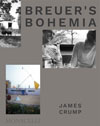 |
I was able to hear James Crump talk about Marcel Breuer, his Bauhaus furniture, his east-coast mid-century homes, his move into brutalist buildings and, not least, the nearly bohemian quality to his life, family and close friends. |
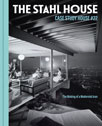 |
I sat down with Kim Cross to talk about her book with Shari Stahl Gronwald and Bruce Stahl on Case Study #22, The Stahl House. This is the house made internationally famous by the photographer Julius Shulman’s iconic photo of two young women sitting in its living area, surrounded by nothing but glass and the lights of Los Angeles far below. |
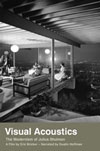 |
I spoke with Eric Bricker about his film Visual Acoustics: The Modernism Of Julius Shulman, a documentary that explores the work and life of this enormously talented architectural photographer. Shulman, who passed away in 2009 at the age of 98, was probably the world’s best known photographer of modern architecture. His work was equally striking and exquisitely crafted. |
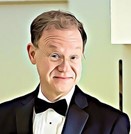 |
My invitation to Modernism Week was with USModernist, an organization that continues to build the world’s largest, open, digital archive of modernist houses and their architects. At this time, they have 5 million data points and this grows daily. Their elegant Founder and CEO, George Smart and a superb team, have raised awareness about modern homes across the US to preserve these places and their legacies. My conversations with George left me searching for my pen and writing as fast as I could, to keep up with the information he happily shared! |
 I also had the greatest pleasure speaking with Michela O’Connor Abrams, the Chief Advancement Officer for US Modernist, Founder of MOCA+, a design & management consulting firm and former CEO of Dwell. Michela is a leader, an innovator and an inspirational motivator.
I also had the greatest pleasure speaking with Michela O’Connor Abrams, the Chief Advancement Officer for US Modernist, Founder of MOCA+, a design & management consulting firm and former CEO of Dwell. Michela is a leader, an innovator and an inspirational motivator.
Her work has created awareness and great value around design and content. The Bruce Mau quote: “For better or worse everything is connected which is why everything matters” seems to sum up Michela’s approach to the choices we make personally, professionally, as individuals and as community.
Through all of these conversations, I thought about my modernism question … and, as I’d hoped, I found the common treads I thought might be there. For one thing, Modernism never really welded itself to the steel frames of the 20th century. It wasn’t ever meant to be a stylistic replacement for Neo-Georgian, Federal, or Romanesque columns and ornament. It was really about the physics of materiality and the metaphysics of time and space.
What we built with our hands could result from our minds and hearts in ways that deeply connected to this planet. A column could be a column; a door could be a door; no ornament, nothing extra needed, just materials used with thoughtfulness and care. The architect Louis Kahn’s quote about speaking to a brick: “…What do you want, Brick? …” was part of his own modernist’s philosophy to “honor the material that you use”.
All of this came in an era of industrial modernization and burgeoning consumerism. With the increasing desires for more and an overwhelming need to house growing communities, it became clear that modernism could create a path of simplicity of form, beauty in proportion and economics of mass-production. Form could follow function. Beauty and aesthetics could be reimagined in their essential expressions.
An architecture of its time and place, in harmony with nature - perhaps easy to see when you look at a 1950’s home by Albert Frey, or waterfront restaurant by Richard Neutra. In part, this is because these places expressed the intention of their programs (their functions and uses) with no need to look back. I think of the quote “don’t look back, unless you intend to go there”. Modernism looked to its present and a hastening future.
So, what I saw and what I found most people saying about modernism, during my Palm Springs days, was that it is the result of reducing to what is essential, imagining the effects of space and material, creating in context with this earth and living and working in ways that serve our hearts and minds. This is not a definition of architecture and art in the 1900’s to 1980’s. It’s an agreement with ourselves to connect with where we are, create community with others, build what we need, as we need it, with material embodying aesthetics and function in equal measure.
Not only is modernism modern, its “time” is timeless. These principals are just as important today as ever. They are key to our need for adaptability, sustainability and resilience. Just as important for us as it is for all life on this planet. Modernism is alive and well, reimagining itself every day.
And just like in any good desert, I found Palm Springs had an oasis … of ideals and energy … maybe a good martini, too!

